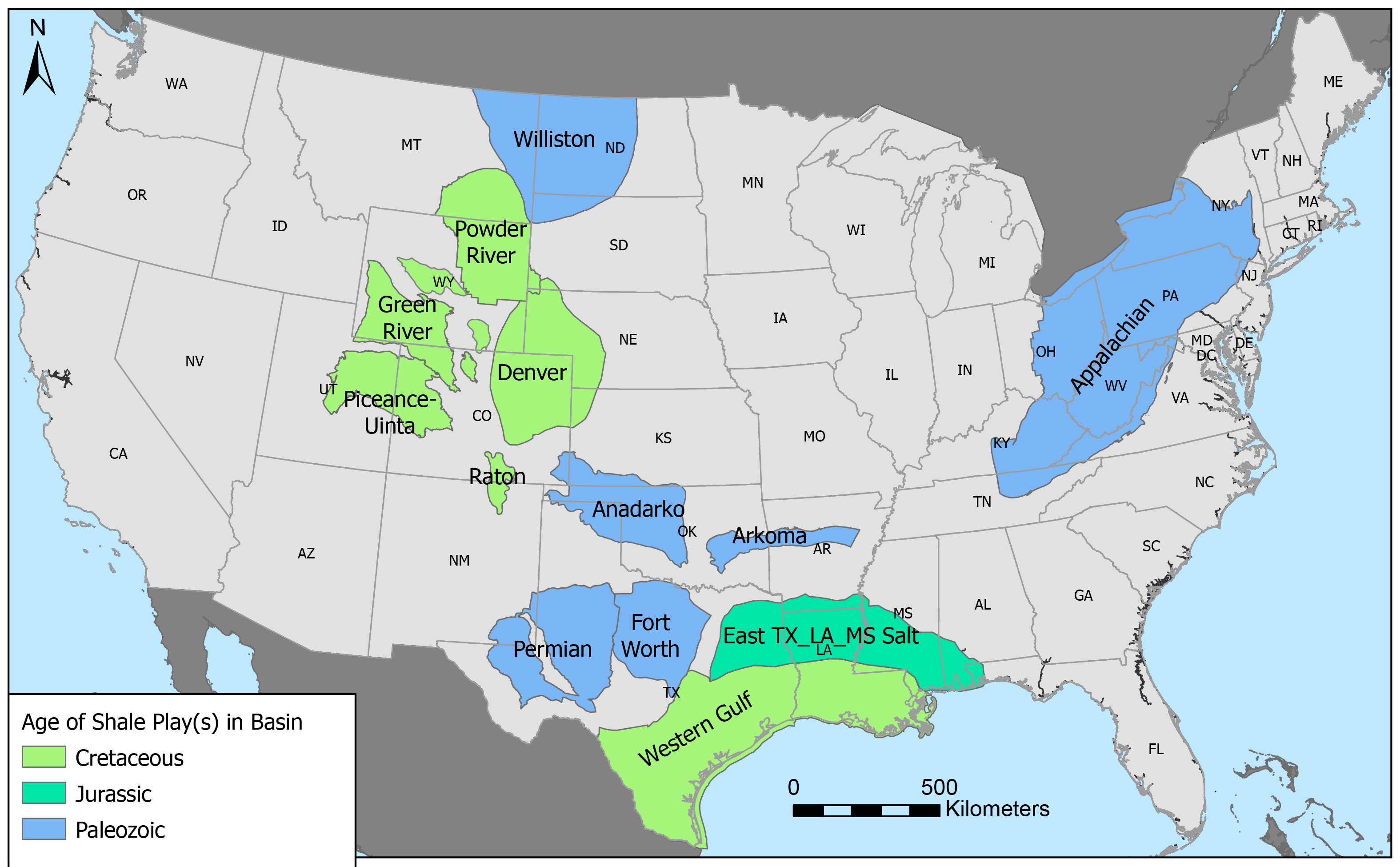Bureau Researchers’ New Paper Describes Status of U.S. Shale Plays

In August 2024, a group of researchers from the Bureau of Economic Geology published an overview of U.S. shale oil and gas plays in the journal Petroleum Exploration and Development (see the paper at: https://doi.org/10.1016/S1876-3804(24)60516-1). This paper gives a high-level summary of the development and current state of shale oil and gas in the United States, describing a transformation in which hydrocarbon production from shale reservoirs moved from an anomaly to the primary contributor to U.S. oil and gas production.
The authors of the paper include Dr. Timothy McMahon and Dr. Toti Larson, who currently direct the Bureau’s research efforts into shale oil and gas reservoirs. Dr. McMahon is the Principal Investigator for the Tight Oil Resource Assessment (TORA) consortium, which, since 2016, has done integrated research on how regional variations in stratigraphy, petrophysical, and geomechanical attributes combine with drilling and completion practices to impact well production. The results of these efforts are used to estimate in-place and recoverable hydrocarbon volumes at the basin-scale, as well as to look at play and well economics and production forecasting.
Dr. Larson is the Principal Investigator for the Mudrock Systems Research Laboratory (MSRL) consortium, which, since 2009, has focused on improving our knowledge of reservoir characterization and the stratigraphic framework of mudrock systems by integrating core measurements, fluid saturations, fluid flow modeling, and petrophysics. Multidisciplinary in nature, MSRL studies are applied to understand geological heterogeneities in the subsurface across oil and gas reservoirs by an integrated approach of geology, geochemistry, petrophysics, and well logging.
In 2026, these two consortia will merge to form the Resource Assessment of Mudrock Systems (RAMS) consortium. The combined effort will be designed to address key research questions that pertain to unconventional oil and gas reservoirs and to improve petrophysics models through integration with detailed core-based calibrations and facies models. Improved petrophysics models will inform basin-scale static models and finer sector-scale static/dynamic models, resource estimates, productivity analyses, and economic models. The central thrust of this research will be the ongoing effort to understand the fundamental scientific parameters that control oil and gas fluid flow and production in mudrock systems. RAMS will focus on methods to upscale core-based observations to inform reservoir models, and, conversely, to see if detailed pore-scale analyses can answer questions and uncertainties that result from regional-scale observations.